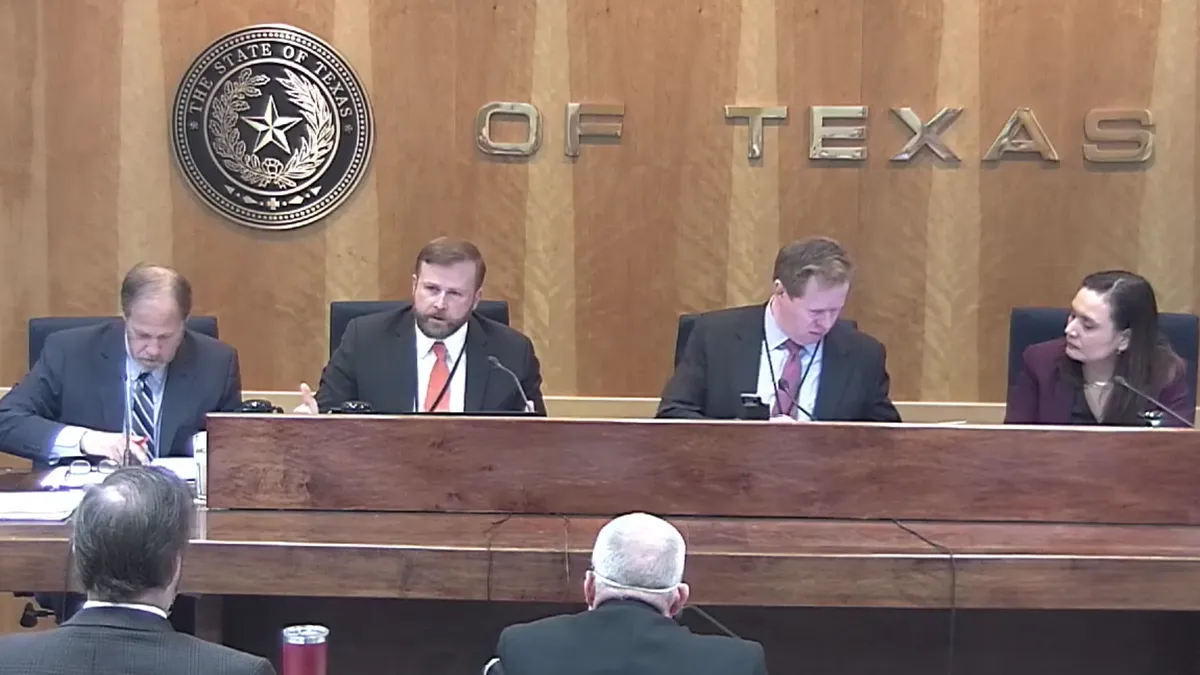Dive Brief:
- The Public Utility Commission of Texas on Thursday voted to raise the budget for the state’s industrial demand response program, known as Emergency Response Service, or ERS, a day after a sweltering heat wave pushed the grid to the brink.
- The Electric Reliability Council of Texas deployed the ERS program on Wednesday for about 3.5 hours and saw demand drop by roughly 1,000 MW, grid officials said at the PUCT’s open meeting on Thursday.
- The expansion adds $25 million to the ERS budget, which previously sat at $50 million. Regulators also signaled a willingness to extend the program further, though some stakeholders had advocated for immediately raising its budget even more.
Dive Insight:
Thursday’s PUCT meeting began on a sobering note, with a public comment period focused on rising bills and the risk an unstable grid presents to vulnerable residents.
“There is absolutely no excuse for our state to have a power grid that cannot support the needs of Texans, especially when we pay ridiculously high electric bills,” Robin Schneider, executive director of Texas Campaign for the Environment, read from comments submitted to her organization this week. Customers with medical issues could die in the event of a power outage, she said, and savings are being depleted.
The ERCOT grid set two new peak demand records this week, and on Wednesday wholesale power prices reached the market’s $5,000/MWh price cap as wind output fell and fossil fuel outages increased. Twice this week the grid operator asked customers to reduce electricity consumption, and on Wednesday it turned to industrial demand response as well.
“A substantial part of the ERS reserve was used yesterday,” PUCT Chairman Peter Lake said. “It was used effectively, to ensure reliability.”
The $25 million expansion is effective immediately, and more could be added, regulators said.
“I'm not sure that the amount that we're authorizing is enough. But I also know that we can come back and do this again, if we have to,” Commissioner Jimmy Glotfelty said.
“We still have a lot of hot days ahead of us,” Lake said. “We've got a full half summer ahead.”
Enel North America dispatched its demand response systems in Texas to assist on Wednesday. The company’s Head of U.S. Public Policy Mona Tierney-Lloyd said the state’s population is booming and rising temperatures are stressing the electric grid.
“We think it was a good step by the PUCT to approve increasing the emergency response service budget and the availability of these emergency response resources,” she said. “We also think this year is going to be a proof point on whether that additional $25 million was adequate.”
With energy demand “multiplying” in ERCOT, “encouraging more distributed participation in the market is a good area of focus,” Tierney-Lloyd added.
The Advanced Energy Management Alliance had advocated expanding the ERS program cap to $200 million, in comments filed July 5. “The economic impact of grid outages is enormous, and the cost of additional insurance to help avoid the need for involuntary forced outages pales in comparison,” the group said.
Commissioners received an update on grid performance from ERCOT Vice President of Corporate Strategy and PUC Relations Kristi Hobbs. There have been 30 records set on the ERCOT system in the last 70 days, she said, but reliability has been maintained in part because of new tools authorized by the PUCT.
On Monday, a new peak demand record of 78,264 MW was set around 5 p.m., though Commissioner Lori Cobos noted the system had excess reserve capacity of 5,496 MW at that time. On Tuesday another peak demand record was set, of 78,419 MW, but the system still had 4,487 MW in reserve, she said.
A new record was not set on Wednesday, but lower levels of generation meant the ERS program was deployed.
“There was successful deployment of our emergency response services, and working with [utilities] for distribution voltage reduction,” Hobbs said. “Both of those programs, being very reliable, helped us yesterday to keep from getting to emergency situations.”
















